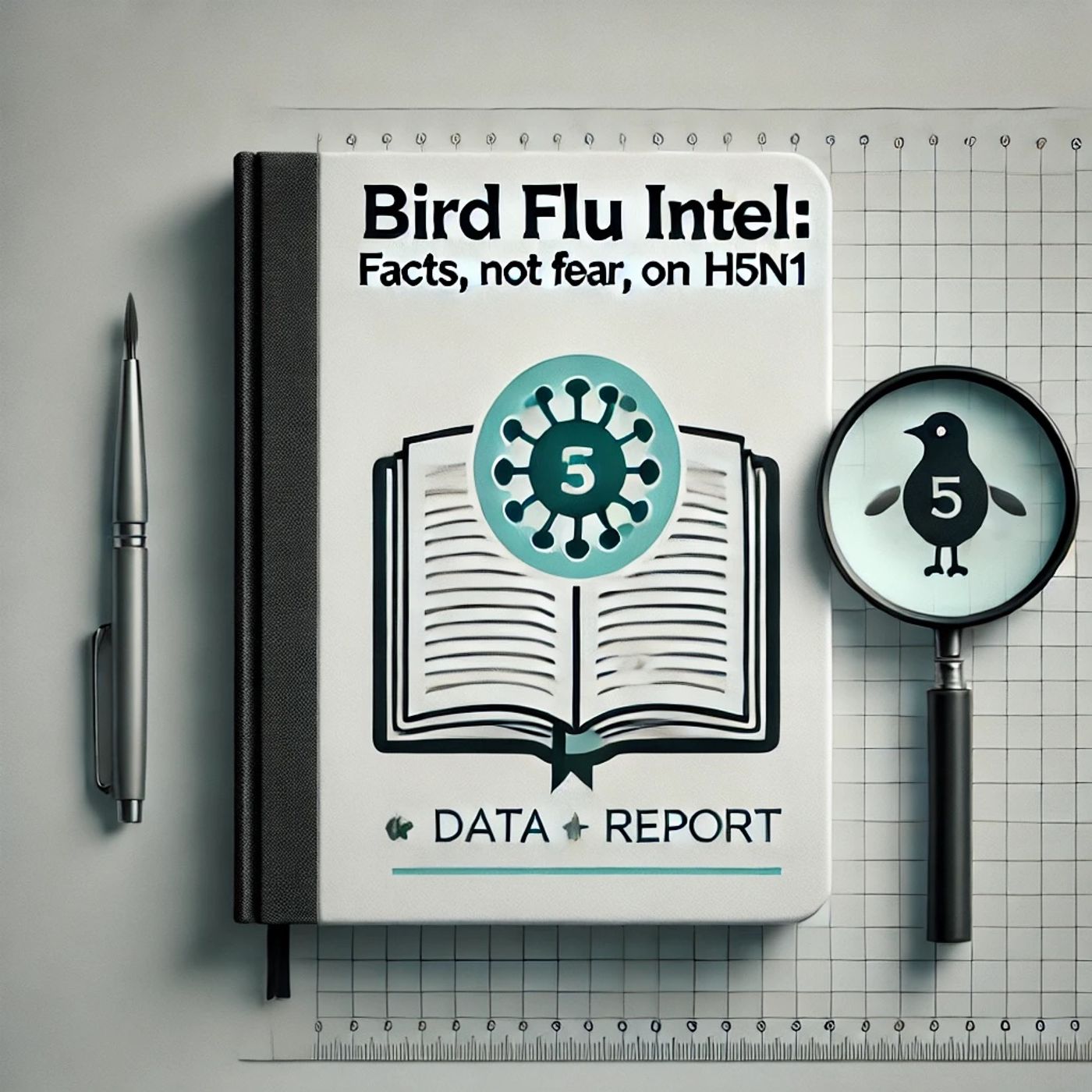Podcast Episode Details
Back to Podcast Episodes
H5N1 Bird Flu Myths Debunked: Expert Reveals Truth About Transmission, Safety, and Prevention Strategies
Welcome to Bird Flu Intel, where we separate facts from fiction about H5N1. I'm your host, and today we're busting myths that could put you and your community at risk.
Let's tackle four dangerous misconceptions circulating right now.
Myth one: H5N1 spreads easily between humans like COVID-19. This is false. The CDC reports 70 confirmed cases in the US since 2024, with zero evidence of person-to-person transmission. Nearly all infections occurred in agricultural workers directly handling infected animals. The virus hasn't developed the ability to transmit efficiently between people.
Myth two: Drinking pasteurized milk is dangerous because of H5N1. Wrong again. Multiple health agencies confirm pasteurization completely destroys the H5N1 virus. The real danger lies in raw, unpasteurized milk, which the Florida Department of Health specifically warns against consuming.
Myth three: All bird flu cases are deadly. Actually, most US cases have been remarkably mild. The University of Florida reports that over 90 percent of cases show only eye irritation, with many people experiencing no symptoms at all. While Louisiana sadly reported the first US death in January 2025, this remains extremely rare.
Myth four: Seasonal flu vaccines protect against H5N1. They don't. However, getting your annual flu shot is still crucial because it prevents dangerous co-infections that could allow genetic material swapping between viruses.
Why does misinformation spread so fast? Social media algorithms amplify emotional content over factual information. Fear-based posts get more clicks and shares than boring scientific data. This creates an echo chamber where myths multiply faster than facts.
Bad information isn't just annoying, it's dangerous. It leads people to ignore real protective measures like avoiding sick animals, cooking poultry thoroughly, and wearing protective equipment when necessary. It also creates unnecessary panic that diverts resources from actual prevention efforts.
How can you spot reliable information? First, check if sources cite peer-reviewed research or official health agencies like the CDC or state health departments. Second, be suspicious of claims that sound too extreme or use emotional language. Third, cross-reference information across multiple reputable sources.
Here's what scientists actually know about H5N1: It primarily infects through direct contact with infected animals or contaminated environments. The current strains circulating in dairy cattle are less lethal to humans than previous variants. Most infections remain mild, especially with proper medical treatment using antivirals like Tamiflu.
What remains uncertain? Scientists are monitoring whether the virus might mutate to spread more easily between people. They're also studying how long immunity lasts after infection and developing updated vaccines for the current strain.
The bottom line: H5N1 deserves respect, not panic. Follow basic precautions, trust credible sources, and don't let fear override facts.
Thanks for tuning into Bird Flu Intel. Come back next week for more evidence-based updates on H5N1. This has been a Quiet Please production. For more fact-based content, check out Quiet Please Dot A I.
For more http://www.quietplease.ai
Get the best deals https://amzn.to/3ODvOta
This content was created in partnership and with the help of Artificial Intelligence AI
Published on 2 days, 16 hours ago